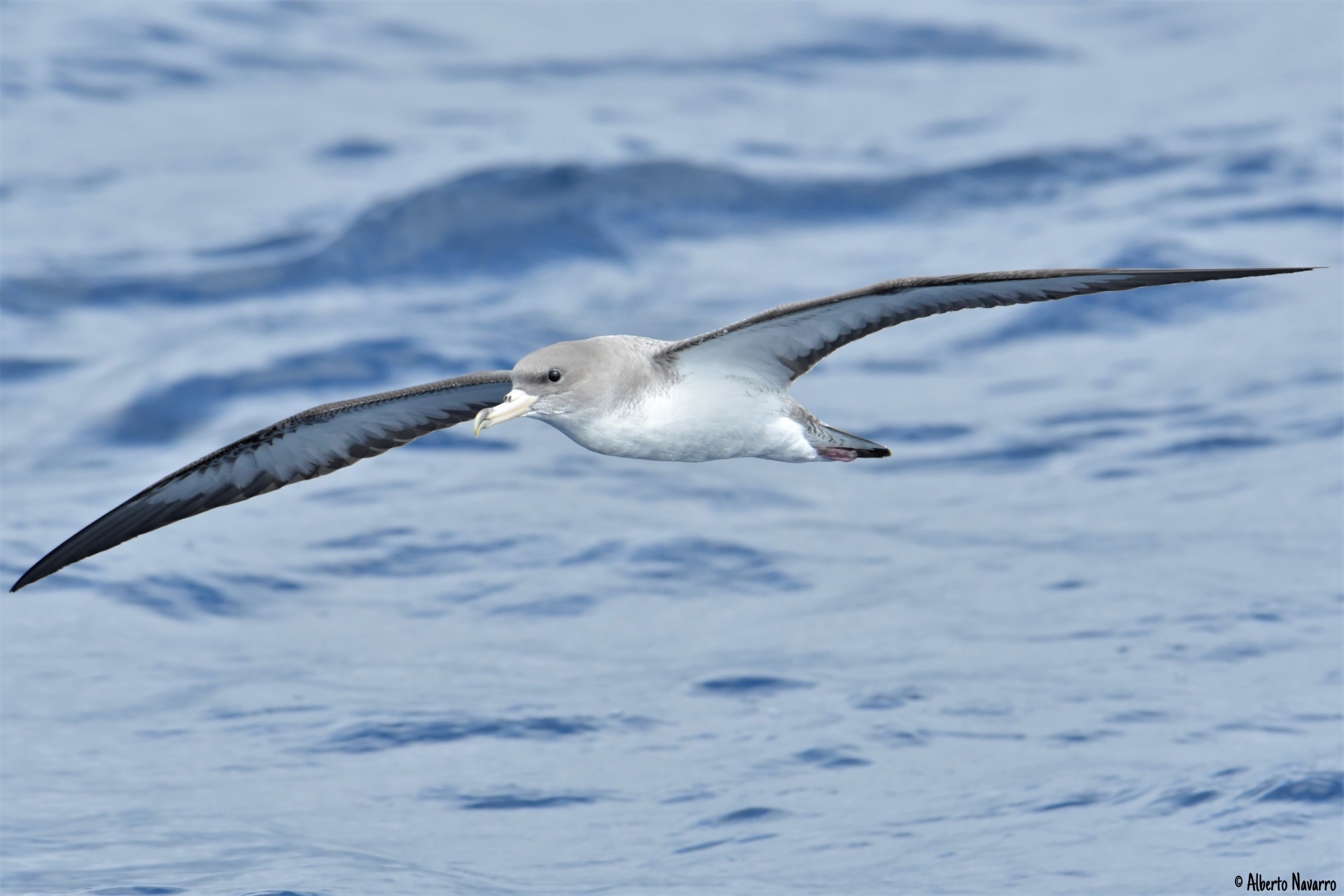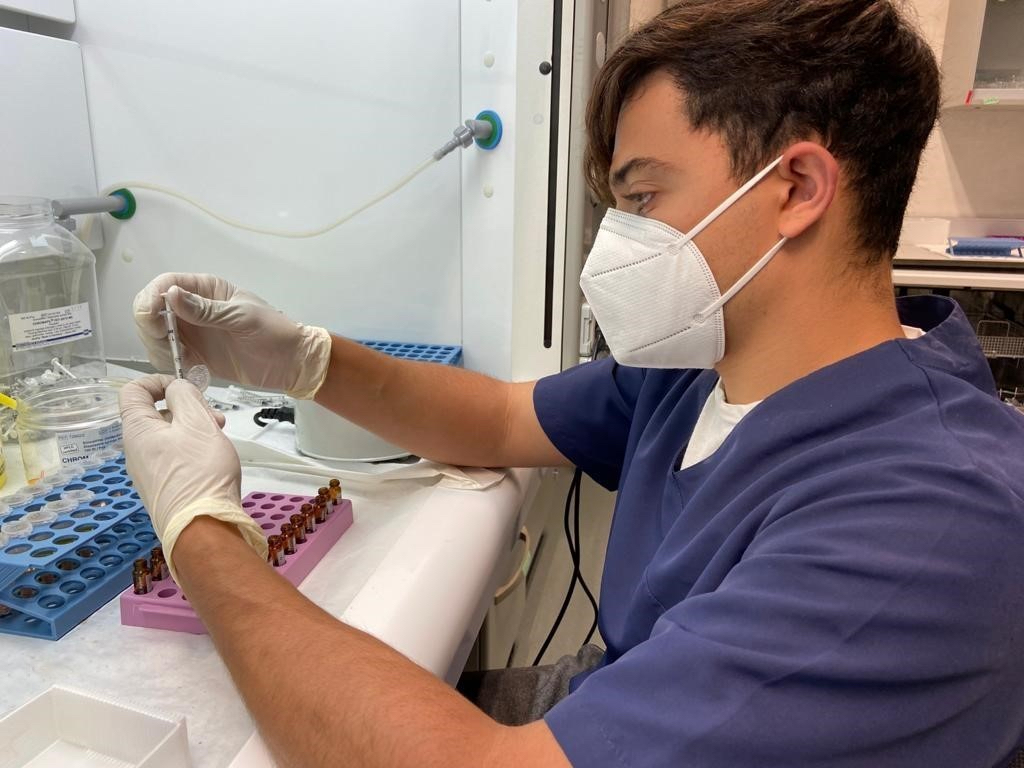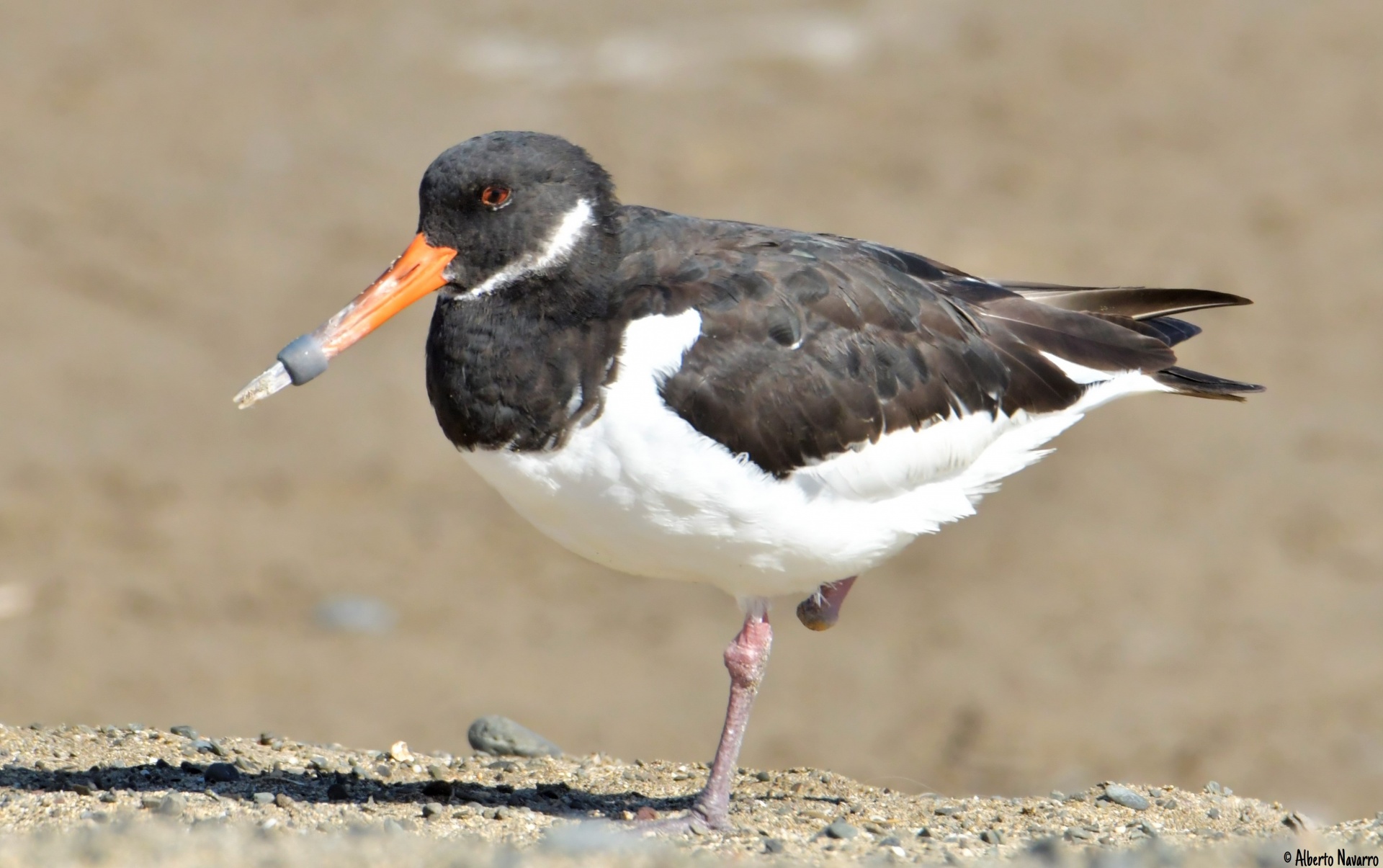More than half of the birds studied corresponded to Atlantic Cory's shearwaters, which in almost 89% of the cases showed rests of plastics in their digestive tract
The conclusions are part of a pioneering study carried out between the ECOAQUA and iUIBS institutes of the ULPGC
The researchers from the University of Las Palmas de Gran Canaria, belonging to the group of Ecophysiology of Marine Organisms (EOMAR) of the Institute for Research in Sustainable Aquaculture and Marine Ecosystems (ECOAQUA), and the Institute of Biomedical and Health Research (iUIBS) have located plastic rests in the gastrointestinal tract of more than 60% of 88 seabirds belonging to 14 different species, analyzed during the research study that has been published in the prestigious journal Marine Pollution Bulletin.
With Alberto Navarro as principal researcher (PI), the study 'Ingestion of Microplastics and Chemical Pollutants in Seabirds of Gran Canaria (Canary Islands, Spain)' has evaluated the presence of this type of residues in deceased birds during their admission to the Centro de Recuperación de Fauna Silvestre del Cabildo de Gran Canaria.
Among the findings established by the research teams, the study has determined that the Atlantic Cory's shearwaters analyzed, a species that corresponded to more than half of the deceased birds researched, contained up to 89% of the cases of plastic rests in their digestive tract, being mainly fishing material, such as remains of nets and fishing lines.
According to the researchers, the average number of plastic pieces found in this species is more than seven, with up to 23 plastic pieces found in one specimen.

Atlantic Cory's shearwater
The study also found plastic residues in the five specimens of the Madeiran storm-petrel analyzed, which is the first report of ingestion of these pollutants by this species worldwide.
Both species, the Atlantic Cory's shearwater and the Madeiran storm-petrel, feed mainly in open waters, and the plastics detected in their organisms come from this ecosystem. This data agrees with previous studies published in the same scientific journal by the EOMAR group of ECOAQUA, which have determined the existence of more than one million microplastics per square kilometer in the waters near the island of Gran Canaria.
On the other hand, of the 20 yellow-legged gulls studied, 30% showed the presence of plastics in their organism. These residues also appeared in one of the two black-headed gulls studied, as well as in the only cattle egret included in the study. According to the researchers, these three species tend to frequent urban areas and landfills, which makes them susceptible to accidental ingestion of this type of material.
In the analysis of the liver of the birds studied, chemical pollutants such as polychlorinated biphenyls (PCBs) were detected in 100% of the birds studied, in addition to large quantities of polycyclic aromatic hydrocarbons (PAHs) and organochlorine pesticides (OCPs) and, to a lesser extent, polybrominated diphenyl ethers (BDEs). Many of the substances detected, as described by the scientists, have a high persistence in the environment, with bioaccumulative characteristics throughout the food chain.
In this way, the researchers who have been part of the study have wanted to warn about the high degree of threat to seabirds represented by plastic pollution, having detected incidences of this type of waste in 44% of the species worldwide.

Alberto Navarro, researcher at the University Institute ECOAQUA of the ULPGC.
Based on these data, it is estimated that at this rate 99% of species will be affected by 2050. According to the scientists, "the danger of this type of contamination is not only in the ingestion, but also in how the plastics can cause the death of birds as a consequence of their entanglement in this material".
As an example of this, they point to the case that occurred this year 2022 in the area of the Maspalomas, where a Eurasian oystercatcher lost a limb when it became entangled in a fishing line and, a few months later, ended up dying after getting its beak caught in a rubber ring.
The research groups have wanted to focus on the growing problem that plastic waste and chemical pollutants represent for seabirds in the Canary Islands. Danger that this research study comes to confirm.
In addition to Alberto Navarro, the researchers Alicia Herrera, Ico Martínez and May Gómez, from the EOMAR group of the University Institute ECOAQUA, as well as the scientists Octavio Pérez Luzardo, Andrea Acosta Dacal and Ana Macías Montes from the iUIBS, have participated in the study. Likewise, Jorge Felipe de la Rosa, from the Faculty of Veterinary Medicine of the ULPGC, and Alejandro Suárez Pérez, veterinarian of the Centro de Recuperación ‘La Tahonilla’ de Tenerife, have also collaborated with the research.
The article can be downloaded free of charge here.
For more information, please contact:
Beatriz Díaz – beatriz@mandarinacomunicacion.es – 620410871


